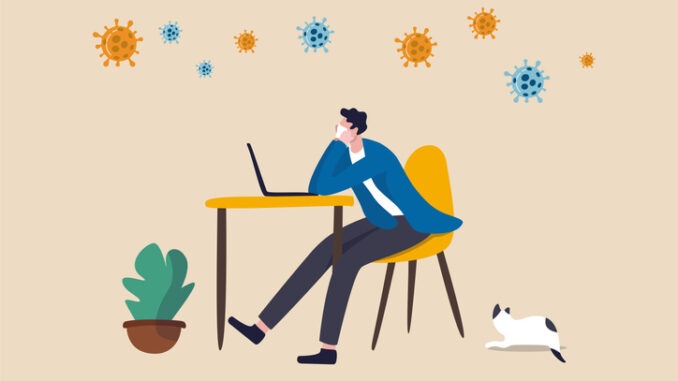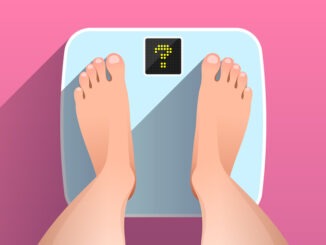
Scott Weich, professor of mental health, says that the risks are clear and now is the time to learn and respond
CREDIT: This is an edited version of an article that originally appeared on The BMJ
A clear picture has emerged of the mental health impacts of the early waves of the COVID-19 pandemic in England – when hospital admissions and mortality were common, and lockdowns particularly restrictive. Longitudinal population-based studies show that symptoms of anxiety and depression were marked, but often transient, increasing during lockdowns and subsiding afterwards to pre-pandemic levels. Nevertheless, around 10% of the population experienced persistent distress, with women, 18-30 years-olds, people with pre-existing mental or physical health problems, those living in deprived areas and ethnic minority communities most affected.
The psychiatric sequelae of infection with early SARS-CoV-2 variants are most clearly shown in three large studies based on two US healthcare databases. In their linked paper, Xie and colleagues considered outcomes over 12 months in a large cohort of adults who survived the acute phase of COVID-19 – longer than the 90 day and six-month follow-up periods in two previous studies by Taquet and colleagues.
Xie and colleagues analysed healthcare data from the US Department of Veterans Affairs on 153,848 patients who survived at least 30 days after a positive polymerase chain reaction test result (start of follow-up) between March 2020 and January 2021. Outcomes were compared with two control groups without COVID-19, matched on start of follow-up and survival 30 days after that date – 5,637,840 contemporary controls and 5,859,251 historical controls who had not experienced the pandemic (data from 2018).
Additional comparisons were made with people who had seasonal influenza and with those admitted to hospital for influenza and other reasons. Study outcomes included non-psychotic psychiatric disorders and prescriptions of antidepressants and anxiolytics, and survival analyses adjusted for confounders selected algorithmically from hundreds of candidate variables.
Estimated hazards ratios for anxiety and depressive disorders among people with COVID-19 (compared with contemporary controls) were 1.35 (95% confidence interval 1.30 to 1.39) and 1.39 (1.34 to 1.43), respectively, corresponding to risk differences per 1000 individuals at one year of 11.06 (9.64 to 12.53) and 15.12 (13.38 to 16.91). Hazard ratios were increased for antidepressant (1.55, 1.50 to 1.60) and benzodiazepine prescribing (1.65, 1.58 to 1.72). All associations were smaller compared with historical controls. When people with COVID-19 were compared with patients who had influenza before the pandemic, hazard ratios for anxiety and depressive disorders were slightly smaller (1.44 (1.22 to 1.71) and 1.32 (1.12 to 1.56), respectively) than those previously reported by Taquet and colleagues over six months.
What do these studies tell us?
Both report significant – and consistent but modest – associations between SARS-CoV-2 infection and increased rates of psychiatric disorders; although between-group differences persist for at least 12 months, the absolute risk of experiencing a psychiatric disorder decreases sharply after the first month. Both studies were susceptible to residual confounding and potential misclassification of recurrent, versus first onset, infections, limiting causal inference and interpretation. Importantly, mental healthcare might have been more accessible to those known to have had COVID-19 than to contemporaries without this condition, or among historical cohorts, further biasing estimates away from the null.
What have we learnt?
Time, money, and scarce research expertise have been devoted to showing, again and on a societal scale, that threat makes people anxious but diminishes for most people when the danger passes. Further confirmation has shown that those who are most disadvantaged experience the worst (mental) health outcomes – particularly after the harms caused by a decade of austerity in the UK and many other countries. Health inequalities have widened, particularly for people with serious mental illness who have experienced even more exclusion and premature mortality during the pandemic.
Taking stock
The worst of the pandemic might be behind us in terms of mortality and social restrictions. Taking stock, it could be argued that much of the research concerned with the mental health impacts of COVID-19 represents more hindsight than insight. Looking back at what happened is, arguably, less important than reflecting on what we have learnt, what we need to do next, and what we still do not know. Our attachment to syndromal phenotypes means that we have learnt remarkably little about the causes of mental ill health – in this case, psychopathology associated with a viral pandemic. We continue to generate more heat than light as we reflect on the usual biopsychosocial suspects without cutting through to conclusive insights or effective interventions.
We do not yet know the true incidence and consequences of long COVID, and we are still witnessing the unfolding toll of the pandemic on healthcare staff. Also, we do not have an effective response to the devastating disruption to health, social care and voluntary sector services on the lives of people with serious mental illness. While epidemiological research has flourished – at least in terms of scientific publications – we are guilty of failing to prioritise evaluations of mental healthcare interventions, including clinical trials, just when these are most needed.


Be the first to comment